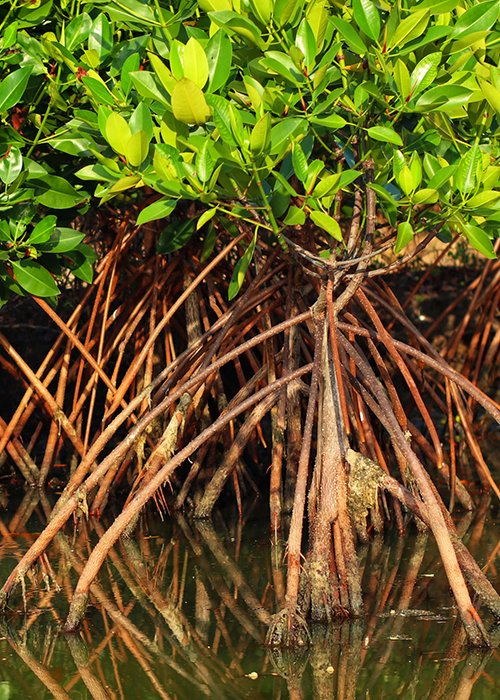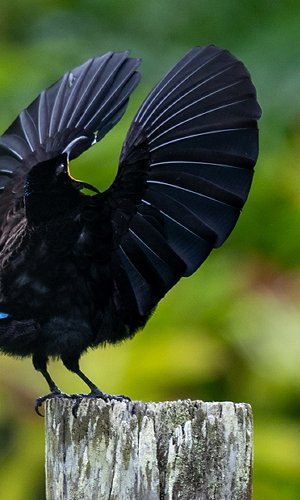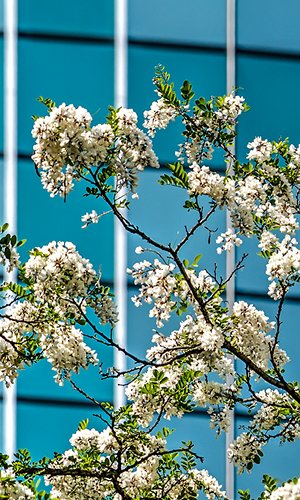A mangrove forest is a very special ecosystem that develops along the subtropical and tropical coasts surrounding the equator. Mangroves live in brackish environments (estuaries and sea coasts) and are among the very few existing land plants that can survive in contact with salt water: because of this characteristic, mangroves are called halophyte plants. Mangroves have developed several adaptations that allow them to live in environments where the water salinity is highly variable, the muddy soil is poor in oxygen and nutrients, and the conditions are prohibitive for most plants. These adaptations include roots that stick out of the soil to capture atmospheric oxygen (aerial roots) and the ability to eliminate excess salt by expelling it from special organs on their roots and leaves.
Mangrove forests are true oases of biodiversity. Some organisms, such as crabs and insects, feed directly on the tree leaves, while others such as bacteria and fungi feed on the leaves and bark that fall to the ground. These latter decomposer organisms perform a fundamental action for the ecosystem, as they degrade complex organic material and give the plant back simple nutrients such as nitrogen, phosphorus, and sulphur, all useful molecules for plant growth. The aerial part of these plants provides valuable support for the nests of a great many birds, and the branches provide shelter for ants, spiders, scorpions, lizards and snakes.
Some organisms are even exclusive to mangrove forests, such as the mangrove hummingbird (Amazilia boucardi), an endangered species due to the disappearance of its environment. This hummingbird feeds mostly on nectar from Pacific mangroves, a species found only in parts of Nicaragua and Ecuador. The life present below the water surface includes a huge variety of organisms: sponges, anemones, worms and oysters live attached to the underwater part of the roots. Many species of crabs, shrimp and fish spend the early stages of their lives in the crevices found among mangrove roots, which provide a safe haven from predators. Precisely because it provides shelter for eggs and the young of various species, it is called the "sea nanny".
Despite their fundamental importance, mangroves are disappearing at an impressive rate. One of the major causes of the destruction of this fragile ecosystem is deforestation, both due to the demand for wood and to make way for intensive shrimp aquaculture. Climate change and extreme events are also contributing to the disappearance of this valuable ecosystem.





